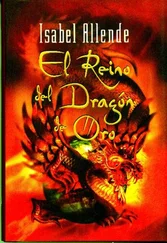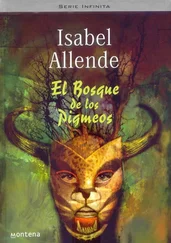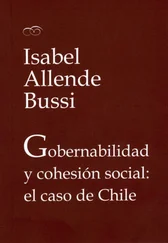Isabel Allende - Zorro
Здесь есть возможность читать онлайн «Isabel Allende - Zorro» весь текст электронной книги совершенно бесплатно (целиком полную версию без сокращений). В некоторых случаях можно слушать аудио, скачать через торрент в формате fb2 и присутствует краткое содержание. Год выпуска: 2005, ISBN: 2005, Издательство: Harper Perennial, Жанр: Исторические приключения, на английском языке. Описание произведения, (предисловие) а так же отзывы посетителей доступны на портале библиотеки ЛибКат.
- Название:Zorro
- Автор:
- Издательство:Harper Perennial
- Жанр:
- Год:2005
- ISBN:9780060779009
- Рейтинг книги:3 / 5. Голосов: 1
-
Избранное:Добавить в избранное
- Отзывы:
-
Ваша оценка:
- 60
- 1
- 2
- 3
- 4
- 5
Zorro: краткое содержание, описание и аннотация
Предлагаем к чтению аннотацию, описание, краткое содержание или предисловие (зависит от того, что написал сам автор книги «Zorro»). Если вы не нашли необходимую информацию о книге — напишите в комментариях, мы постараемся отыскать её.
Zorro — читать онлайн бесплатно полную книгу (весь текст) целиком
Ниже представлен текст книги, разбитый по страницам. Система сохранения места последней прочитанной страницы, позволяет с удобством читать онлайн бесплатно книгу «Zorro», без необходимости каждый раз заново искать на чём Вы остановились. Поставьте закладку, и сможете в любой момент перейти на страницу, на которой закончили чтение.
Интервал:
Закладка:
Wednesday at noon the Indians attacked. In spite of their silent approach, when they reached the environs of the mission the defenders were waiting. The first impression the fiery warriors had was that the mission was deserted: there was nothing in the courtyard but a pair of bone-thin dogs and a distraught hen. They did not see a soul anywhere and they heard no voices and saw no smoke coming from the huts. Some of the attacking Indians were on horseback and clad in animal hides, but most were naked and on foot. All were armed with bows and arrows, clubs, and spears. In the lead galloped the mysterious chief, wearing red and black war paint; a wolf’s pelt served as a kind of tunic, and a complete wolf’s head topped a flowing mane of black hair. The rider’s face was barely visible through its maws.
Within a few minutes’ time the raiders had raced through the mission, setting fire to the straw huts and destroying clay vessels, casks, tools, looms… anything within reach, all without encountering the least resistance. Their chilling war yells and the speed at which they moved drowned out the calls of the male neophytes locked in the women’s lodge. Heady with success, they charged the church, loosing a rain of arrows that bounced uselessly off the strong adobe walls. At the order of Chief Gray Wolf they attempted to ram the heavy wood doors, which trembled with the impact but did not yield. The noise and war whoops rose in volume with each thwarted attempt to breach the door, while some of the more athletic and emboldened warriors looked for a way to climb up to the narrow window slits and bell tower.
Inside the church the tension became more unbearable with each echoing crash upon the door. The defenders four missionaries, five soldiers, and eight neophytes were in place along the sides of the nave, protected behind sacks of sand and backed up by Indian girls ready to reload their weapons. De la Vega had trained them the best he could, but not too much could be expected of a few terrified girls who had never seen a musket at close range. Their task consisted of a series of actions that any soldier performed without thinking but which had taken the captain hours to explain to them. Once the weapon was ready, the girl handed it to the man responsible for firing it, and prepared another. When the trigger was pulled, a spark lit the powder in the pan, which in turn ignited the main charge in the barrel. Damp powder, flint residue, and blocked touch holes often caused misfires; it was not unusual, in addition, to forget to remove the rammer from the barrel before firing.
“Don’t be discouraged, that’s how it goes in war. Noise and commotion. If one weapon fails to work, the next one should soon be ready, so you can keep right on killing,” Alejandro de la Vega instructed.
The remaining females and all the children of the mission were secured in a room behind the altar. Padre Mendoza had sworn to protect them with his life. The valiant defenders, with fingers on the trigger and half their faces protected by kerchiefs soaked in vinegar and water, silently awaited the order from the captain, the one person unfazed by the Indians’ yelling and the slamming of bodies against the door.
Coldly, de la Vega calculated how long the wood door would resist; the success of his plan depended on acting at the precise moment and in perfect coordination. He had not had occasion to fight since the campaigns in Italy several years before, but he was lucid and calm. The only sign that betrayed apprehension was the tickling in his hands that he always felt before firing.
Eventually the Indians tired of crashing against the door and fell back to catch their breath and receive instructions from their chief. A terrifying silence replaced the former hullabaloo. That was the moment de la Vega chose to give the signal. The church bell began to ring furiously as four neophytes lighted rags dipped in tar, producing a thick, stinking cloud. Two others lifted the heavy crossbar bolting the door. The peals aroused the Indians, who regrouped to attack again. This time the door unexpectedly yielded at the first contact; they tumbled into the church, fell over each other, and collided with the barrier of sacks of sand and rocks. Coming from the brilliant light outdoors, they were blind in the darkness and smoke of the interior. From the sides of the nave, ten muskets fired in unison, wounding several Indians who fell in their tracks, screaming. The captain lighted a fuse and within a few seconds the flame had reached the sacks filled with a mixture of gunpowder, tallow, and lead that had been set up in front of the barricade. The explosion rocked the foundations of the church, set off a hail of metal particles and pebbles, and shook the large wood cross over the altar right off the wall. Protected behind their parapets, the defenders were able to reload their weapons and get off a second round before the first arrows flew through the air. Several Indians lay sprawled on the floor, and those who were still on their feet were coughing and tearing from the smoke, making an easy target for the defenders’ musket balls.
De la Vega’s crew reloaded three times before Chief Gray Wolf, followed by the most courageous warriors, swarmed over the barricade and surged into the nave of the church. In the chaos of battle, Captain Alejandro de la Vega never took his eyes off the Indian chief; soon he broke free of the braves surrounding him and leapt toward the chief, roaring like a wild beast, sword in hand. He brought down his blade with all his strength, but it slashed through empty air because Chief Gray Wolf’s instinct had warned him, and he had dodged to the side, avoiding the blow. The momentum of the swing threw the captain off balance; he lunged forward, tripped, and fell to his knees as his sword struck the ground and snapped in two. With a howl of triumph, the Indian lifted his lance to run the captain through, but the gesture was never completed. A blow to the nape of the neck felled the chief, who dropped facedown on the floor, where he lay motionless.
“May God forgive me!” exclaimed Padre Mendoza, who was wielding a musket by the muzzle, landing blows right and left with ferocious pleasure.
To the surprise of Captain de la Vega, who had thought he was a dead man, a dark pool was rapidly forming around the chief, and the proud wolf’s head was turning red. Padre Mendoza crowned his inappropriate jubilation with a stout kick to the inert body of the fallen chief. All he had to do was smell the gunpowder and he had reverted to the bloodthirsty soldier he had been in his youth. Almost instantly, the word spread among the Indians that their chief was down; they began to fall back, at first hesitantly and then at top speed, vanishing into the distance. The victors, dripping with sweat and half suffocated, waited until the dust of the attacker’s retreat had settled before they went outside to draw a breath of fresh air. A salvo of shots fired into the air was added to the crazed ringing of the church bell; that and the boisterous hurrahs of men and women with a new lease on life drowned out the moans of the wounded and the hysterical weeping of the women and children still locked behind the altar, swooning in the smoke.
Padre Mendoza rolled up the sleeves of his blood-soaked cassock and set about restoring his mission to normal, unaware that he had lost an ear and that the blood was not his enemies’ but his own. He totted up the mission’s minimal losses and sent two prayers up to heaven, giving thanks for their triumph but also asking forgiveness for having lost all trace of Christian compassion in the heat of the battle. Two of his soldiers had suffered minor wounds, and an arrow had pierced the arm of one of the missionaries. They had one death to mourn, that of a fifteen-year-old Indian girl who had helped load the weapons. She had fallen faceup, her clubbed skull cracked open, her large, dark eyes wide with surprise. While Padre Mendoza was organizing his band to put out the fires, bind up the wounded, and bury the dead, Captain Alejandro de la Vega, with another sword in hand, was searching the nave of the church, looking for the body of the Indian chief, with the idea of impaling his head on a pike and planting it at the entrance of the mission to discourage anyone who might cherish the idea of following his example. He found Chief Gray Wolf where he had fallen, barely a pathetic bundle in the puddle of his own blood. With one sweep of his hand the captain jerked off the wolf’s head and with the toe of his boot turned over the body, which seemed much smaller than it had while flourishing a spear. Still blind with rage and panting from the exertion of the battle, de la Vega grabbed the chief by his black hair and lifted his sword to decapitate him with a single stroke, but just before he swung, the Indian opened his eyes and looked at the captain with an unexpected expression of curiosity.
Читать дальшеИнтервал:
Закладка:
Похожие книги на «Zorro»
Представляем Вашему вниманию похожие книги на «Zorro» списком для выбора. Мы отобрали схожую по названию и смыслу литературу в надежде предоставить читателям больше вариантов отыскать новые, интересные, ещё непрочитанные произведения.
Обсуждение, отзывы о книге «Zorro» и просто собственные мнения читателей. Оставьте ваши комментарии, напишите, что Вы думаете о произведении, его смысле или главных героях. Укажите что конкретно понравилось, а что нет, и почему Вы так считаете.











